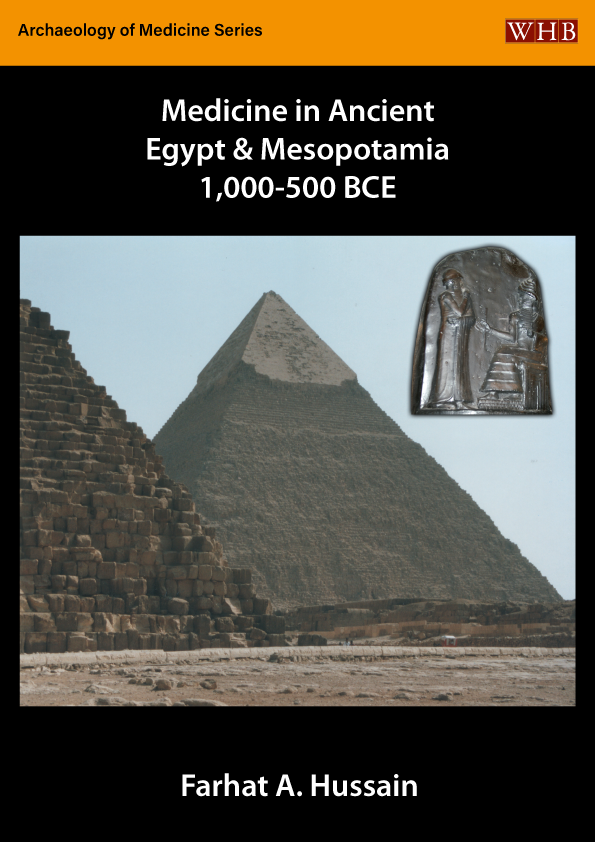
Medicine in Ancient Mesopotamia
Author: Farhat A. Hussain
Some publications that address the archaeology and history of medicine provide inadequate attention to Egypt and Mesopotamia. This omission, that in some cases may result from bias or absence of knowledge and focus of authors on a Eurocentric study of medicine in the ancient world, requires addressing especially as medicine was present in both civilizations a very long time before classical Greece and Rome. General studies of the history of medicine in the ancient world or even, in some cases, of the civilizations of Ancient Egypt and Mesopotamia sometimes include information about these two civilizations that is very general in scope and often lacking in depth. Some publications demonstrate a lack of understanding of medical practice in Egypt and Mesopotamia including of the relation between religion and medicine. In contrast to art, architecture, urban planning, politics, economy and religion, medicine has received relatively less attention in studies of these civilizations, perhaps considered a specialist field or one for which there is less material to draw on than other areas.
This work explores key aspects of medicine in Ancient Egypt and Mesopotamia during the first half of the first millennium BCE. This period witnessed a number of notable political, economic and cultural developments in both civilizations. The extent to which medicine constituted change or continuity, or both, will contribute to our knowledge of medicine and these civilizations in this period. As alluded to by the author in his work The Philosophy of History, our contemporary reference to 1,000 BCE did not hold and meaning or validity for the people of these civilizations. This year was not the start of a new millennium in Egypt or Mesopotamia. In each of these notable ancient civilizations that made an impact on many others, including Greece, this period drew on the medical and broader heritage of the second millennium and before this, in addition to contemporary understandings and efforts during the period addressed in this study.
Divided into four parts, this study commences with an introduction that comprises several chapters (including scope of sources and religion and medicine) that provide foundations for subsequent parts: Key elements of medicine and healing (preventative care, conceptions of the body, understanding of illness, divination, hepatoscopy, magic, exorcism, fertility and birth); in-depth study (disease, surgery and anatomy, dentistry, materia medica); further analysis and conclusion. The scope of this work as also methodology speaks to the interest of the author not only in the history and archaeology of medicine and civilizations but also interactions between and amongst cultures and civilizations. The value and challenges of such a comparative study are also demonstrated and analysed. Present-day common understandings and dichotomy of terms such as superstition and rational outlook and approaches cannot be effectively applied to a study of medicine in Ancient Mesopotamia and Egypt due to the fusion of rationale outlook towards approaches to illness, medicine and life that incorporated myth, magic and superstition as defined in the present-day. This issue in some respects underlines postmodernist concerns with use of language and terms from the present day to accurately capture the phenomena of present and past. Attention to careful interpretation of evidence and citing scholarship contributes to this subject though constantly requires critical engagement. Therefore, amidst the limitations of scope of evidence and our understanding of period, place, people and medicine and healing, it is possible to articulate aspects of these phenomena and subjects. Comparative study contributes much to understanding medicine and broader aspects of each of these two cultures and civilizations in this period.